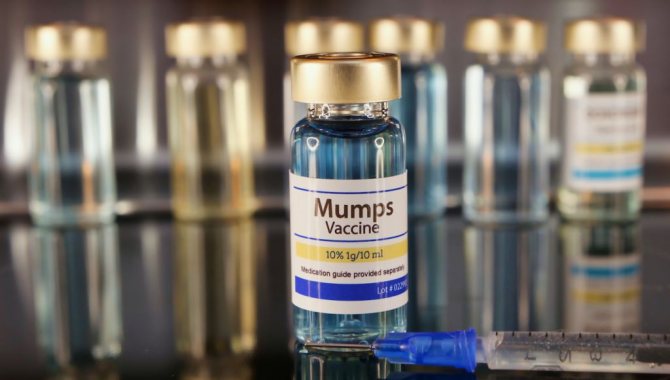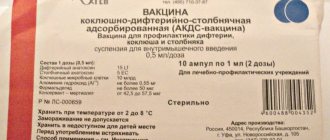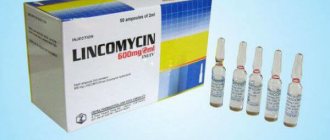Priorix is an imported vaccine against measles, rubella and mumps. Manufacturer: GlaxoSmithKline Biologicals sa, Belgium. The vaccine is proven to be highly effective: antibodies against measles are detected in 98% of those vaccinated, against rubella in 99% and against mumps in 96%. Priorix fully complies with WHO requirements for the production of biological products.
Why vaccinate your child against measles?
Measles is one of the most dangerous “childhood” diseases. Firstly, it is extremely contagious: the chances of getting sick after contact with someone with measles are close to 100%. A decrease in the percentage of vaccinated children, even by a small amount, immediately results in a surge in the incidence of measles. Already in the 2000s, epidemics were recorded in such prosperous countries as Ireland and the USA: the reasons were the availability of air travel and refusals to vaccinate. Secondly, measles has a high mortality rate (although not as high as tetanus and diphtheria), and children under 5 years of age are especially susceptible to it. Measles still has no specific treatment – only symptomatic treatment. In addition, it causes severe complications on the respiratory system, including bronchitis and pneumonia, and can also lead to partial loss of hearing or vision in the child.
Why vaccinate your child against rubella?
It is known that rubella is most dangerous for pregnant women, since it has an extremely negative effect on the fetus: more than half of newborns experience deafness, and blindness and heart disease are also common. Therefore, the advisability of rubella vaccination for women planning pregnancy seems to be beyond doubt. However, parents often ask the question: why vaccinate a one-year-old girl or, especially, a boy against rubella? After all, it is known that in most cases rubella is quite mild?
As in the case of mumps, the most well-known complication among the people is far from the only one and, alas, not even the most terrible. Progressive rubella panencephalitis, a rare but terrible complication, most often affects boys aged 8 to 19 years. With this complication, a person’s intellect gradually fades and motor functions die off, and it ends with dementia and death. Other complications from rubella that do not discriminate by gender include arthritis, pneumonia and hepatitis.
Why vaccinate your child against mumps?
Mumps (mumps) is not a deadly disease, but can lead to extremely unfavorable complications. It gained fame due to the fact that it is a fairly common cause of infertility in men, which develops as a result of orchitis - inflammation of the testicles. The fact is that the mumps virus affects glandular tissue and is not limited to the postauricular salivary glands (although they are, indeed, usually affected first), but can develop in the tissues of the thyroid gland, pancreas, testicles in boys or ovaries in girls.
Two of the most common myths about the vaccine against it are associated with this feature of mumps. First: the vaccine causes infertility in boys. Of course, this is not true. When grafting, testicular tissue is not affected. Second: there is no point in vaccinating boys before puberty. And this is not so - infertility is caused not by low-quality sperm, but by atrophy of testicular tissue, which, unfortunately, does not depend on age. And high-quality immunity is formed after revaccination, and you may simply not have time to vaccinate your child before he gets sick.
The second question, no less frequent: if mumps is dangerous only for boys, why vaccinate girls? Just for the sake of the notorious population immunity? Of course not. The fact is that, in addition to orchitis, partotitis can cause pancreatitis, and this is lifelong, because the pancreas tissue is not restored; as well as encephalitis and meningoencephalitis - the most dangerous types of brain inflammation. Not very often, but it still happens that the experience of mumps ends in deafness.
Mumps: a “swine” disease
Mumps is another viral infection that is transmitted through direct contact or through the air. The disease received its colloquial name - mumps - from the Latin scrofula - “tumor of the neck”, derived from scrofa - “pig”. The fact is that in the body the virus attacks glandular tissues, and primarily the parotid salivary gland. The gland becomes inflamed, the neck swells and begins to resemble a pig's neck.

Mumps is much less contagious than the two previous diseases, and about a third of those affected are asymptomatic. Mostly children aged 5 to 9 years are affected. Symptoms may include general malaise, headaches, chills, dry mouth and ear pain, which can make it difficult to eat and even speak. The disease is dangerous for complications for boys during puberty, as it can lead to infertility. Another possible complication is the risk of deafness. Adults may experience mumps more severely than children.
Treatment of mumps involves preventing complications, and the best prevention is vaccination. The mumps vaccine has been available since the 1960s and is safe and effective. Even despite the generally favorable situation with the incidence of mumps in the country, the virus can be imported from outside. It most often affects closed communities and communal living groups, such as student dormitories. Vaccination against mumps is carried out in combination with the prevention of measles and rubella.
Possible side effects of Priorix
The specificity of the vaccine against measles, rubella and mumps is that it gives two waves of reaction: the first - within 24 hours after vaccination and the second - approximately 9-10 days after it. The child's condition should be carefully monitored during these periods of time.
In 60% of cases, Priorix vaccination is tolerated by the child without any consequences.
In the remaining cases, the most common occurrence is a rise in temperature, which accompanies the body's production of protective antibodies. Runny nose, cough, hives, pain and swelling at the injection site are also common.
Less common consequences of vaccination are upper respiratory tract infections, otitis media, bronchitis, nervousness, insomnia, conjunctivitis, febrile convulsions.
If any symptoms last longer than two days, you should consult a doctor.
PRIORIX (lyophilisate)
like a professional, there wasn’t even a bruise left.
This is what our injection site looked like, photo below (I made an iodine grid just in case). Honey. my sister immediately warned that the consequences would occur on days 4 and 12 after vaccination. The development of our consequences after the photo of the injection. DAY 1 OF Vaccination. My son slept longer than usual (almost 4 hours), and in the evening large red spots appeared on his face. But it didn’t scare me a little. She gave Suprastin and went to bed. By the way, Zodak gave further, because Suprastin ran out. I immediately decided to give it 5 days after vaccination to reduce the number of consequences.
4 DAY AFTER Vaccination. A small rash began on the face (for some reason only on one side) and on the stomach. Slightly and clearly not an allergy. Everyone was still drinking Zodak.
7 DAY AFTER Vaccination. The day before we went to development activities. Clear snot and low fever began, as in acute respiratory infections. They no longer drank Zodak. The rash is still “traveling” throughout the body: appearing here and there. The rash settled near the ear for a week.
12 DAY AFTER Vaccination. Still sick. Since the 9th day, the temperature has been within 38.5-39 degrees around the clock; they were treated with Aflubin. The snot did not go away, and he began to cough a little. Obviously something viral was caught against the background of reduced immunity. In the instructions, ARVI is listed as a common consequence. Here we have it. Now we can only hope that it won’t come down to antibiotics (The rash is no longer so bright, but it is still there (the spots are no longer red, but the color of the skin, slightly convex, small, the same as in the photo).
RETREAT. On the same day that we got the PCP, my husband talked to a new colleague, and he said that at the end of 2021, his son was vaccinated with the PCP, and as a result, the child developed autism (it was proven that from the vaccine). My husband was all on edge, and naturally I was too. That child was given the Dutch vaccine. Therefore, I ask everyone to look at the country of origin. Priorix is produced in Belgium (or Italy, I don’t understand, both countries are indicated in the instructions).
INSTRUCTIONS!! Read for everyone! In general, instead of unnecessary words, I’m attaching a photo. Read for yourself, the section “Consequences” is most interesting. As I wrote above, ARVI is a common consequence after vaccination with Priorix.
Not only a reaction to egg white is listed as a contraindication (often this is the only contraindication indicated), but also a bunch of other things. The first thing is important for us: this is our first Priorix vaccination, and our son has symptoms of an allergic reaction to it. By the way, my daughter received another vaccine (free at the clinic), and she also had a rash. FOR MYSELF! Remember! Both children had a rash after the MCP vaccine, which is a contraindication for the next vaccination. In addition, both were sick, my son longer and more severely.
The consequences are simply darkness. We don't have an upper respiratory tract infection, but snot with a high fever. But also from the same series of consequences.
Special instructions. According to the instructions, we were supposed to be kept in the treatment room for half an hour. In fact, they practically kicked me out immediately after payment and the injection. Cool, yeah?
As a result. I consider the real consequences after vaccination with Priorix (measles, rubella, mumps) to be:
1. Red spots and rash. The first ones appeared only on day 1, but the rash was there from days 4 to 15 (it traveled throughout the body, and was on the face almost all the time).
2. Nuclear bomb on immunity. I think we got sick not from the vaccine, but from the fact that our immunity dropped and VERY STRONGLY!! If you are reading this, then sit at home for 15 days (just as long as the consequences will appear). On the 6th day we went to developmental training, on the 7th we were already with snot. Quarantine 15 days: home-walk-home. Then you probably won't get sick. I vaccinated an absolutely healthy child, and after the vaccination he felt good, as if he had never been vaccinated. If we had stayed at home for 2 weeks, it probably would have worked out.
Will I do 2 revaccinations? No, because there was a rash. And this vaccination is too much of a blow to the immune system. Diseases are not so terrible that they can have such consequences. But everyone decides for themselves.
_
I WILL ADD. On the 15th day, the child developed a rash again and the fever and snot returned (before that, he had been a cucumber for 2 days). The rash is similar to the one in the photo 4 days ago, but in the morning it was only covered. A rare rash with dots, very similar to measles, but there are much fewer dots (if you compare it with the photo on the Internet). As a result, the child easily recovered from rubella (spots on 1 day), measles (rash from 4 days to 2 months), and hopefully will not have mumps. The rash lasted for about a day. On the morning of day 15, the rash was very bright and clear, but began to fade before our eyes. By evening it had already disappeared, only the bulges from it remained.
From day 15 we got sick 3 more times in 2 weeks. My son was sick for 3 days with a fever and then came to his senses. As a result, we went for an X-ray, which revealed tracheobronchitis. After treatment, he fell ill again, but, fortunately, he “got out” of the disease on his own, because AB had already been administered for 2 courses.
In addition, NOT ALL OF THE RASH IS GONE!! This is the rash that appeared on day 15. It went away on the body almost immediately, but on the neck and lower cheeks there were black dots for a long time, which then became lighter. Only convex points remain. It took about 2 months. __
And I will add again. Almost a year has passed since this vaccination. They did it in March, the child was endlessly sick. It’s just constantly, and all the diseases instantly turned into something serious. As a result, in September we were admitted to the hospital with a full examination from start to finish. And we found the reason for our research: infectious mononucleosis. In September we had a relapse (temp. 40, which did not go down, and other accompanying symptoms). In general, according to analyses, this infection has been dragging on for us since spring. Just from that same ill-fated vaccination.
Now we can’t get vaccinated at all. At least a year. Now it’s January next year, the little one hasn’t taken antibiotics yet since the hospital (before the hospital he drank 2 times a month).
In general, it turned out to be an attack, not a vaccination. ___
It seems like you can't swear, but you understand me, right?~~
How to prepare for the Priorix vaccination
To properly prepare for vaccination, you should protect your child from possible consequences. Firstly, for several days before and after vaccination you should not visit crowded places or contact people who are known to be sick (if you have to, reschedule the vaccination). Secondly, carefully monitor possible manifestations of ARVI in the child: he must be completely healthy. You should also not vaccinate if your child is actively teething.
It is necessary to eat light, healthy foods, do not overindulge in sweets and allergens, and drink more clean water. You should not introduce new complementary foods on the day of vaccination.
The child’s room, or better yet the entire apartment, should be well ventilated. The indoor humidity level should be maintained at least 65%.
You can give your child an antihistamine, such as Zyrtec, for several days before and after the vaccination.
What should you do after vaccination?
In the first few days after vaccination with Priorix, a number of basic recommendations must be followed:
- do not comb or rub the injection site with a washcloth;
- do not visit public places with large crowds of people;
- do not take vitamin D;
- do not eat too sweet, salty or sour foods;
- do not drink carbonated drinks and juices;
- do not introduce new foods into the diet for 10 days;
- do not contact sick people.
Positive recommendations include:
- walks in the open air;
- drinking clean still water;
- frequent ventilation of the room;
- taking antiallergenic drugs.



